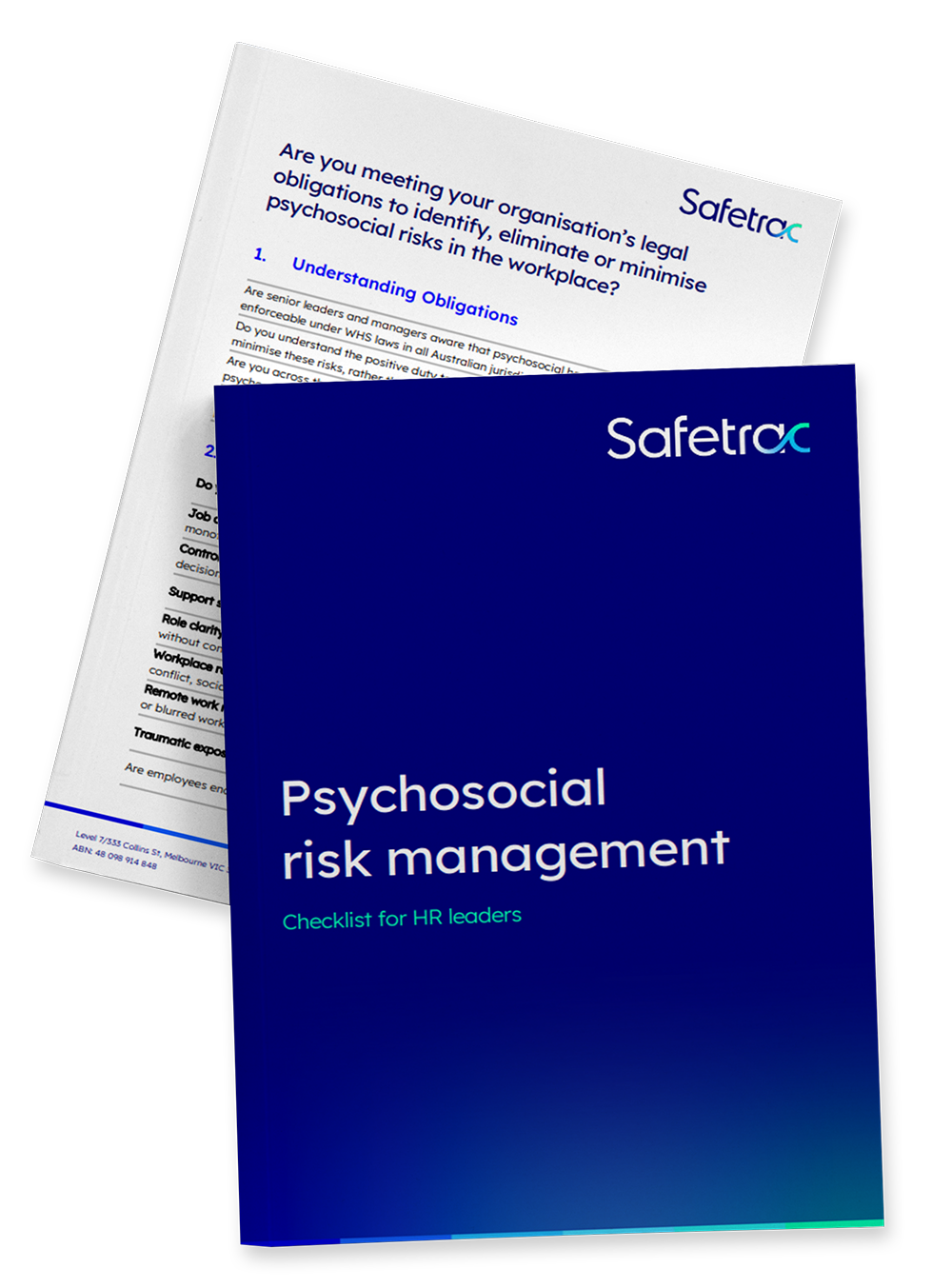Psychosocial safety means creating a workplace where people feel supported, respected, and free from harm. It goes beyond physical safety to address job demands, relationships, and culture that can impact mental health and wellbeing.

Creating a safe and supportive work environment isn’t just best practice—it’s a legal obligation. With WHS regulators now treating psychosocial safety as seriously as physical safety, leaders must proactively identify, assess, and manage risks to mental health and wellbeing. This practical checklist helps you meet those duties while building a culture where people can thrive.
What you’ll find inside:
Whether you’re addressing excessive workloads, preventing bullying, or strengthening workplace culture, this checklist equips you to meet compliance requirements and promote a healthier, high-performing organisation.
Take action to meet Respect@Work standards before it’s too late. This factsheet outlines the 8 essential measures every organisation needs...
Practical strategies and guidelines to prevent workplace harassment and discrimination. Under the Respect@Work legislation, employers are required to actively...
Build a workplace culture that meets Respect@Work standards. This fact sheet offers a comprehensive roadmap for organisations to design and...